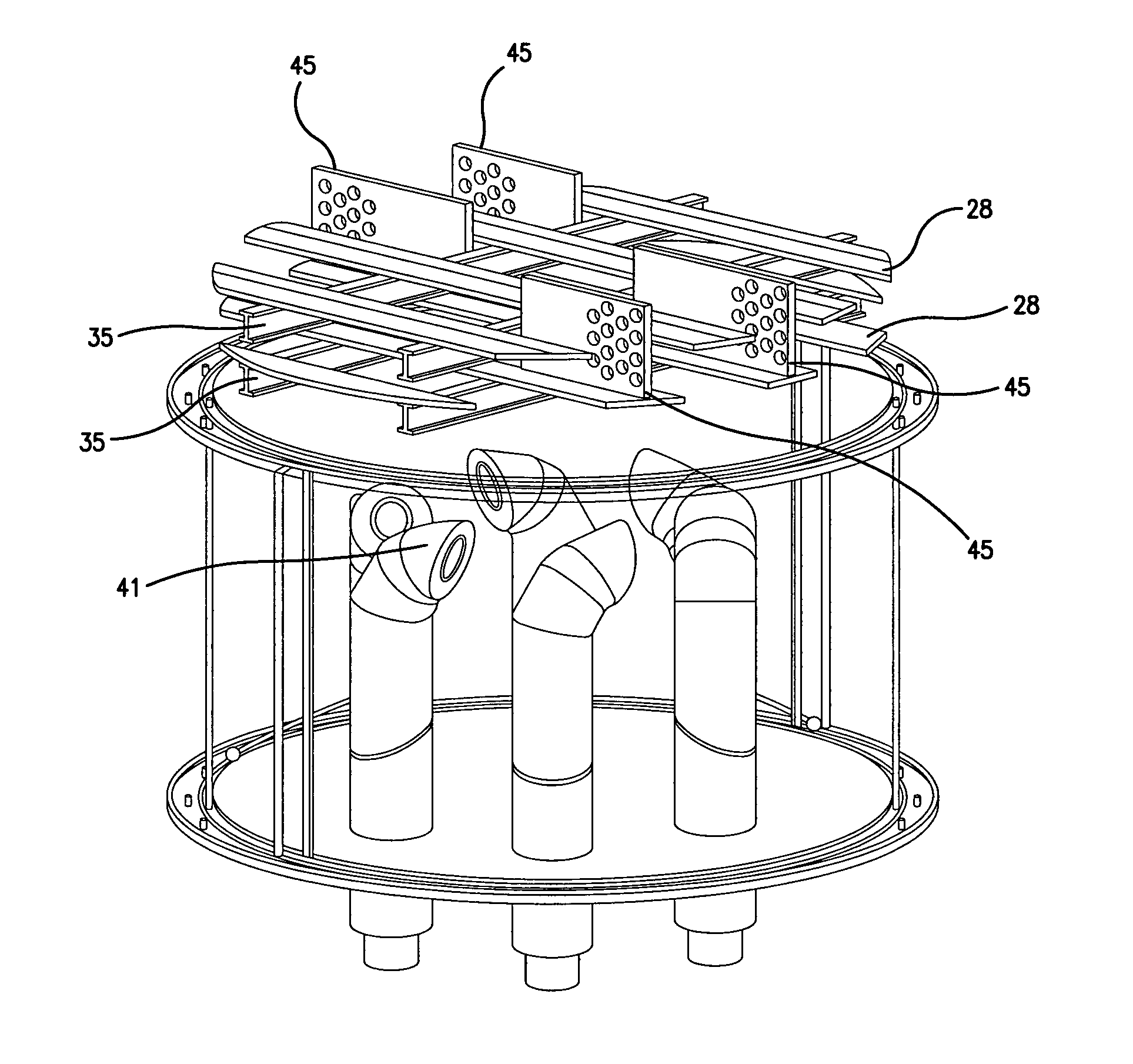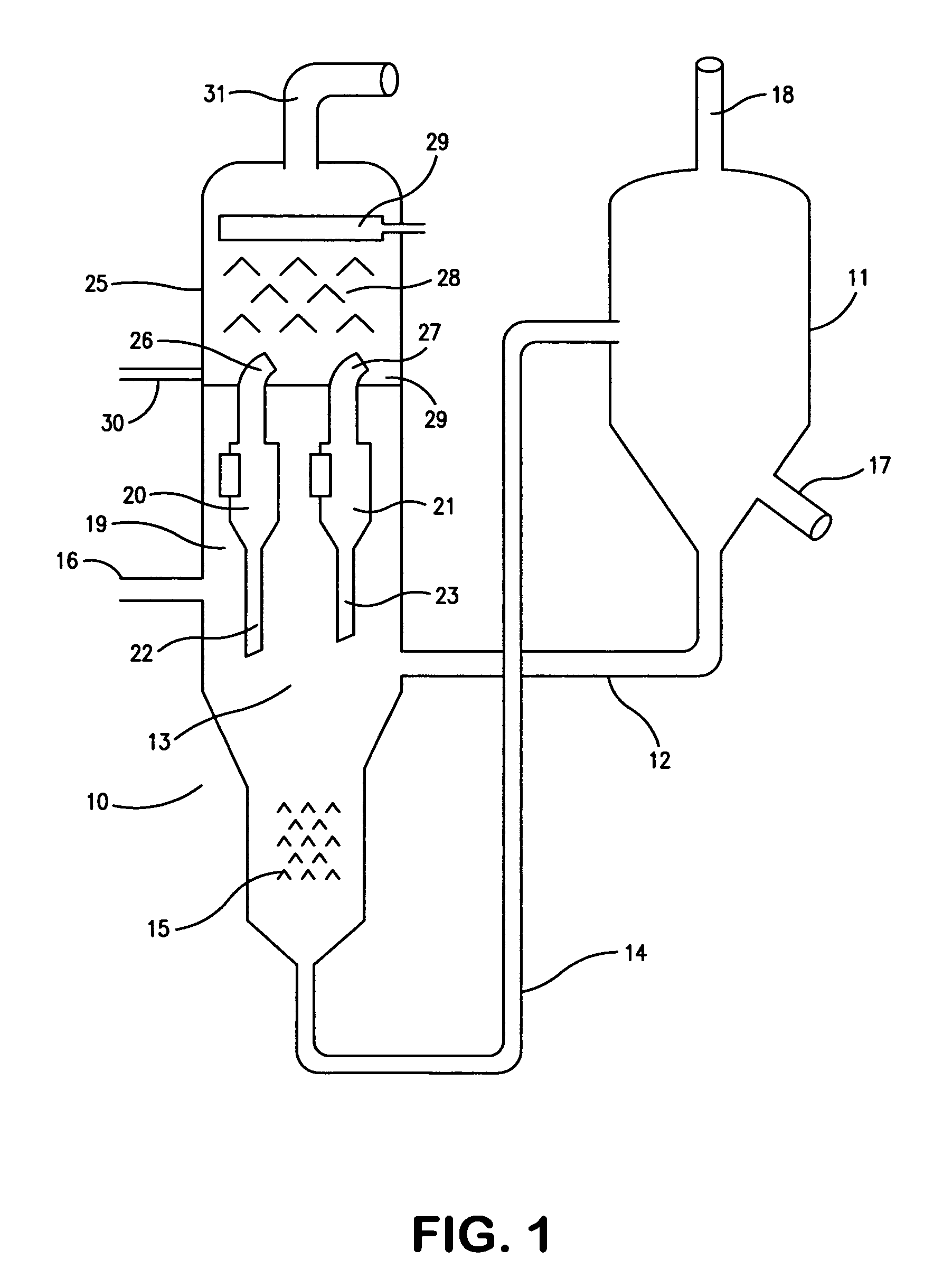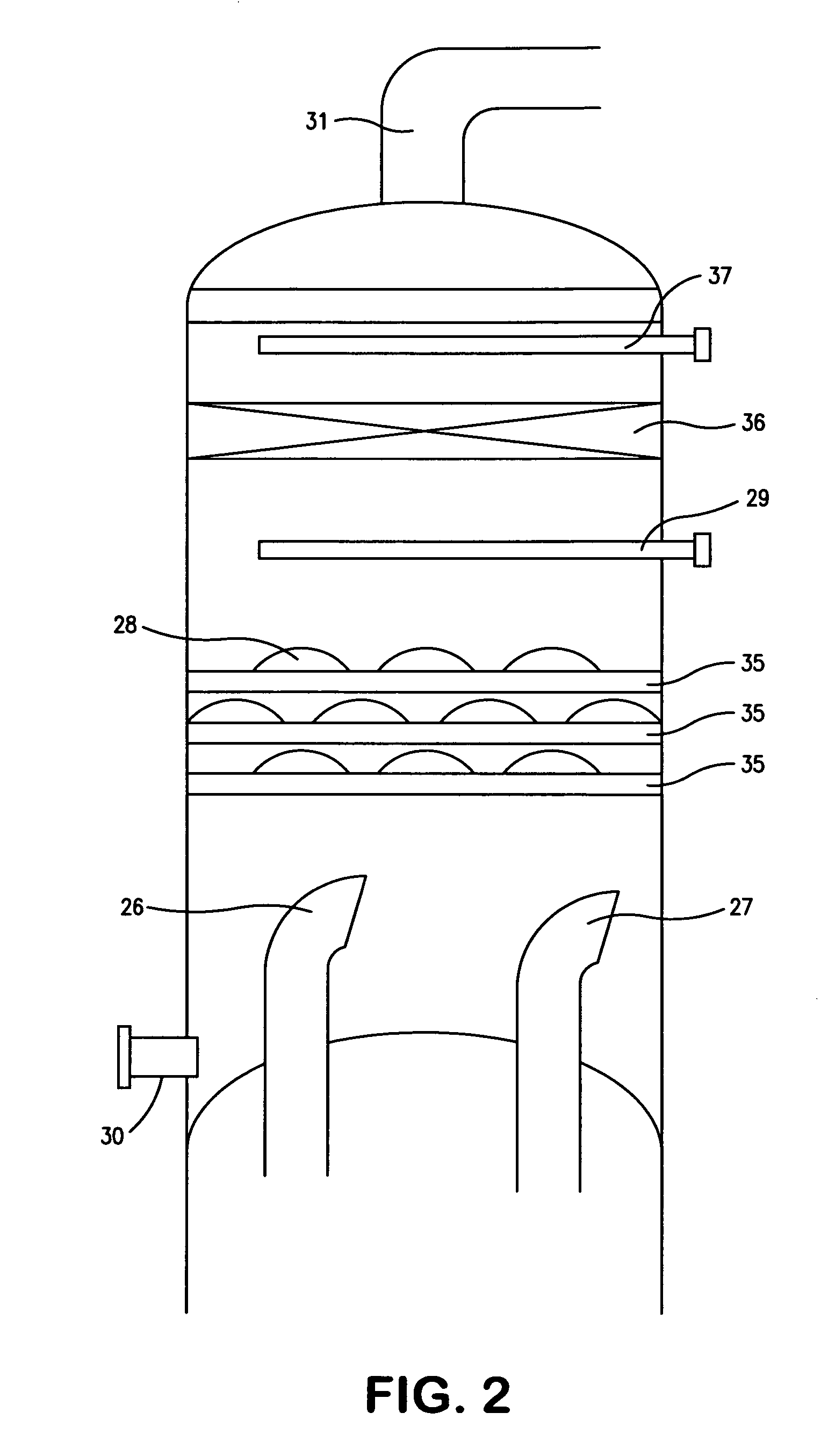Scrubber for fluid coker unit
a technology of fluid coker unit and scrubber section, which is applied in the direction of lighting and heating apparatus, separation processes, furniture, etc., can solve the problems of high pressure drop, poor product quality, and fouling of black oil, so as to reduce the local gas velocity, reduce the temperature, and reduce the fouling rate in the scrubber section of the fluid coker unit
- Summary
- Abstract
- Description
- Claims
- Application Information
AI Technical Summary
Benefits of technology
Problems solved by technology
Method used
Image
Examples
Embodiment Construction
[0014]The present invention is applicable to fluid coking units, that is, to petroleum refinery process units in which a heavy oil feed is thermally cracked in the presence of a fluidized bed of coke particles which supply the heat required for the endothermic cracking reactions. Coke particles are continuously withdrawn from the bed and partly combusted in a separate coke burner vessel to raise the temperature of the particles which are then recirculated to the reactor vessel, as described above. Coke is also withdrawn from the unit as a fuel coke product or, alternatively, may be sent to a gasifier to be converted into refinery fuel gas, as in a Flexicoker fluid coking unit, as licensed by ExxonMobil Research and Engineering Company.
[0015]FIG. 1 shows a fluid coking unit with a reactor vessel 10 and a burner vessel 11 connected in the conventional manner by coke withdrawal conduit 14 which takes coke particles from the fluidized bed at location 13 in reactor 10 to burner vessel 11...
PUM
| Property | Measurement | Unit |
|---|---|---|
| temperatures | aaaaa | aaaaa |
| temperature | aaaaa | aaaaa |
| superficial velocities | aaaaa | aaaaa |
Abstract
Description
Claims
Application Information
 Login to View More
Login to View More - R&D
- Intellectual Property
- Life Sciences
- Materials
- Tech Scout
- Unparalleled Data Quality
- Higher Quality Content
- 60% Fewer Hallucinations
Browse by: Latest US Patents, China's latest patents, Technical Efficacy Thesaurus, Application Domain, Technology Topic, Popular Technical Reports.
© 2025 PatSnap. All rights reserved.Legal|Privacy policy|Modern Slavery Act Transparency Statement|Sitemap|About US| Contact US: help@patsnap.com



